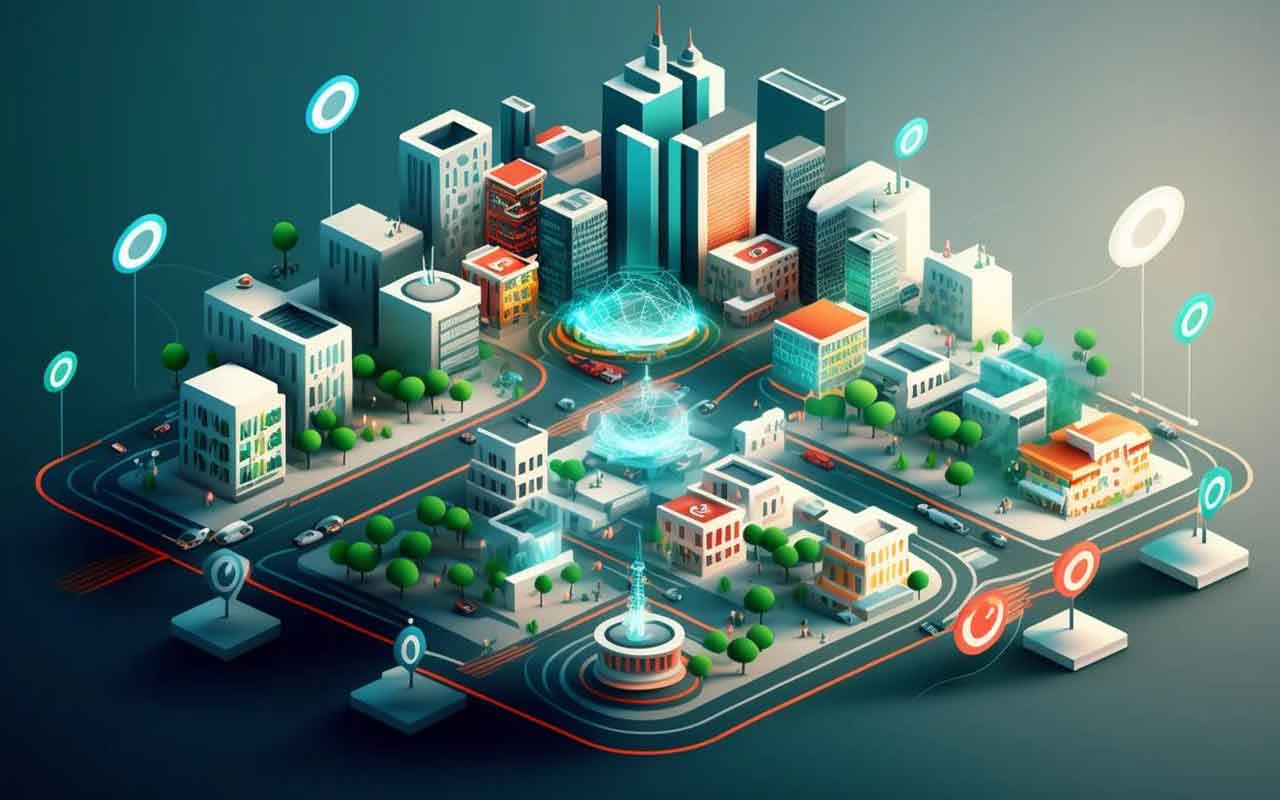As people increasingly migrate from rural areas to cities for better economic opportunities and improved living standards, modern municipalities are faced with challenges. By 2050, an estimated 68% of the global population will reside in urban environments, placing immense strain on existing infrastructure and resource allocation.
Cities are embracing smart city initiatives to address these challenges, leveraging the Internet of Things (IoT) as the cornerstone for data-driven decision making and optimized urban operations. According to IDC, the IoT market in the Middle East and Africa is set to surpass $30.2 billion by 2028, with a robust compound annual growth rate (CAGR) of 10.9% from 2023 to 2028. This impressive growth trajectory underscores the accelerating role of IoT in our lives.
Why the synergy between AI and IoT is key
The real power of IoT lies in its seamless integration with data analytics and Artificial Intelligence (AI), where data from connected devices is transformed into actionable insights. Smart cities in the age of AI harness AI’s ability to analyze vast data streams, enabling intelligent decision-making and efficient resource management. Raw data collected through IoT devices and networks serves as the foundation for urban intelligence.
Advanced analytics platforms, leveraging machine learning (ML) algorithms and AI, extract meaningful insights from this data. Meanwhile, predictive modeling anticipates resource needs and potential infrastructure failures, and anomaly detection allows for prompt identification and mitigation of environmental hazards and security threats.
The synergy between IoT and AI drives cities toward greater innovation, sustainability, and responsiveness. As this integration advances, AI-powered analytics will transform cities into centers of efficiency and sustainability, playing an essential role in unlocking the full potential of IoT and shaping cities into smarter, more adaptive environments.
At the foundational level, a robust smart city ecosystem hinges on the seamless integration of several critical components: densely deployed ubiquitous sensor network infrastructure encompassing environmental sensors, traffic flow monitors, intelligent meters, and video surveillance systems form the foundation for real-time data acquisition.
The ability to ingest and harmonize heterogeneous data streams from disparate sources, including legacy infrastructure systems and citizen-generated data, is crucial for comprehensive urban analytics. Scalable and secure data storage solutions and high-performance computing capabilities are essential for processing massive datasets and generating actionable insights.
The technologies at the heart of smart cities
Several technologies underpin smart cities. Edge computing, which processes data closer to the source, minimizes latency and enables real-time decision-making for critical applications like traffic management and emergency response. By offloading computational tasks from centralized data centers to edge devices, edge computing minimizes the time required to transmit and process data, resulting in faster response times and improved system performance. This is particularly beneficial for latency-sensitive applications like traffic management and emergency response, where rapid decision-making is essential.
The processed data from edge devices can then be fed into digital twins: virtual replicas of physical infrastructure that simulate various scenarios and inform decision-making around urban planning, resource allocation, and disaster preparedness. These can even be visualized in 3D, providing a clear and intuitive understanding of the physical environment. Advanced analytics tools are further used to process and analyze data from the digital twin, enabling predictive modeling, scenario analysis, and optimization.
Then there are advanced connectivity solutions. Low-Power Wide-Area Networks (LPWANs) have become vital for large-scale IoT deployments in urban environments. Popular examples include NB-IoT and LoRaWAN. NB-IoT, a cellular-based LPWAN technology, leverages existing cellular infrastructure to provide enhanced coverage, security, and power-saving features. Its narrowband modulation and integration with existing cellular networks make it ideal for diverse IoT applications.
LoRaWAN, another prominent LPWAN standard, is known for its long-range communication and low-power consumption, making it suitable for smart city applications requiring extensive coverage. For remote areas, satellite connectivity such as Low-Earth Orbit (LEO), Medium-Earth Orbit (MEO), and Geostationary Orbit (GEO), offer a range of latency and coverage solutions to meet wide IoT needs in remote areas.
Examining successes of real smart cities
In recent years, municipalities and real estate developers have been at the forefront of implementing smart city IoT solutions. For instance, the city of Barcelona has deployed an extensive network of sensors to monitor traffic flow, air quality, and noise levels, enabling real-time data-driven decision-making for urban planning and resource allocation.
Dubai Multi Commodities Centre in the United Arab Emirates has implemented a smart district platform to transform the Jumeirah Lakes Towers into a smart and sustainable district. The solution utilizes advanced technologies such as 5G network coverage, smart kiosks, and parking sensors, with 24/7 monitoring to enhance the community’s experience.
In Asia, Singapore aims to green 80% of its buildings by 2030 as part of its sustainability initiative. Its robust public safety infrastructure includes over 100,000 CCTV cameras. Its waste management practices, exemplified by the Tuas South Incineration Plant, minimizes landfill use and generates electricity for over 60,000 homes.
Real estate developers are leveraging IoT to enhance their properties’ value, efficiency, and sustainability and optimize energy consumption in buildings by monitoring energy usage in various areas, from HVAC systems to appliances. Occupancy sensing improves HVAC control and lighting adjustments, while predictive maintenance helps prevent costly downtime and extend the lifespan of building assets.
For residents, IoT-enabled homes allow for the remote management of lighting, temperature, security, and entertainment systems. Smart home devices are also integrated with energy management systems to optimize consumption and costs. To ensure the successful deployment in ongoing and future projects, developers must address factors such as network connectivity, data security, interoperability, scalability, and maintenance.
Challenges to overcome to realize the smart city
Securing vast networks of interconnected devices necessitates robust cybersecurity protocols and continuous vulnerability assessments to mitigate cyberattacks and data breaches. Balancing the benefits of data-driven urban management with the privacy concerns of citizens requires transparent data governance frameworks and robust user consent mechanisms. And ensuring seamless integration and data exchange between IoT systems requires standardizing data formats and communication protocols.
The transformative impact of smart cities transcends mere environmental sustainability. By optimizing operational processes, reducing costs, and elevating quality of life, smart cities generate substantial value for both citizenry and governmental entities. As cities continue to evolve, IoT solutions will redefine the urban experience for future generations.


